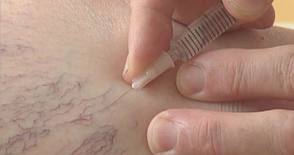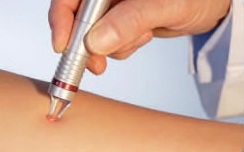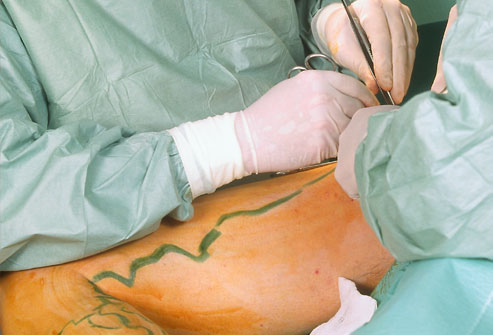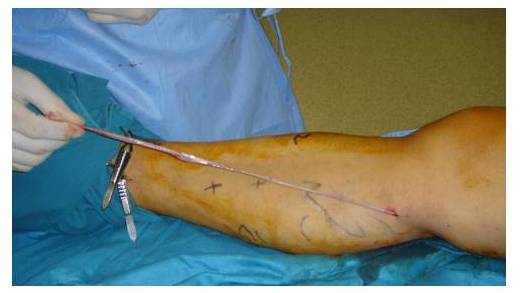-
Kategoriler
-
-
-
-
En İyi Sporcu Ürünleri Burada
-
-
-
-
Kategoriler
-
-
-
-
En İyi Sporcu Ürünleri Burada
-
-
-
-
Kategoriler
-
-
-
-
En İyi Sporcu Ürünleri Burada
-
-
-
-
Kategoriler
-
-
-
-
En İyi Sporcu Ürünleri Burada
-
-
-
Skleroterapi
Skleroterapi en yaygın kullanılan tedavi yöntemidir. Bu tedavi yönteminde damarlara kimyasal bir karışım enjekte edilir. Bu kimyasal damar çeperlerinin kabarmasına, birbiriyle iyi bir şekilde sıkışmasına ve kapanmasına neden olur. Bu kan akışının durmasına ve damar yara dokusuna dönüşür. Birkaç hafta sonra damar solmaya başlar. Bu tedavi yönteminde anesteziye gerek yoktur ve doktor muayenehanesinde kolaylıkla yapılabilir. Tedaviden hemen sonra normal aktivitelerinizi sürdürebilirsiniz.
damar solmaya başlar. Bu tedavi yönteminde anesteziye gerek yoktur ve doktor muayenehanesinde kolaylıkla yapılabilir. Tedaviden hemen sonra normal aktivitelerinizi sürdürebilirsiniz.
Aynı damarın bir defadan daha çok tedavi edilmesi gerekebilir. Bu tedaviler her 4-6 haftada bir yapılabilir. Şişmeyi azaltma ve tedaviye yardımcı olabilmesi için doktorunuz, skleroterapiden sonra varis çorabı kullanmanızı önerebilir. Bu tedavi doğru uygulanırsa oldukça etkili ve başarılı sonuçlar alınabilir.
Skleroterapinin muhtemel yan etkileri:
Enjeksiyonun yapıldığı bölgede morluklar, batma hissi ve kırmızı cilt lekeleri. Bu yan etkiler genelde tedaviden bir süre sonra yok olur.
Noktalar, kahverengi çizgiler, tedavi yapılan damar çevresinde ince kırmızı kan damarları. Bunlar da genellikle tedaviden kısa bir süre sonra kaybolur.
Damarda sıkışan kan topakları iltihaba neden olabilir. Bu tehlikeli bir durum değildir. Ağrı kesici ilaç (aspirin) kullanarak ve sıcak kompres uygulayarak şişliği giderebilirsiniz. Bir sonraki doktor kontrolünüzde, doktorunuz küçük bir iğne deliği ile kan topağını drene edebilir.
Ultrason kılavuzlu (eko-skleroterapi de denir) bir skleroterapi yöntemi vardır. Bu yöntemde iğneye ultrason  görüntü kılavuzluk eder. Bu yöntem özellikle cilt yüzeyinde görünmeyen damarları tedavide etkili olabilir. Bu yöntem ayrıca, ameliyat ya da endovenöz teknikleri ile tedavi edilip tekrar oluşan varislerde de kullanılabilir.
görüntü kılavuzluk eder. Bu yöntem özellikle cilt yüzeyinde görünmeyen damarları tedavide etkili olabilir. Bu yöntem ayrıca, ameliyat ya da endovenöz teknikleri ile tedavi edilip tekrar oluşan varislerde de kullanılabilir.
Skleroterapi doktor muayenehanesinde yapılabilir.
Muhtemel yan etkileri:
Cilt yaraları, şişme, artere ya da derin ven trombozuna yanlışlıkla yapılan enjekte sonucu tehlikeli olabilecek kan pıhtılaşmasına neden olabilir.
Yüzeysel Lazer Tedavileri
Bazı durumlarda yüzeysel lazer tedavileri örümcek damarları ya da küçük varisleri çok etkili bir şekilde tedavi edebilir. Bu tedavi yönteminde damara cilt üzerinden çok güçlü ışık patlamaları gönderilir. Bu yöntem ile damar zamanla solarak kaybolur. Lazerle tedavi için her cilt uygun değildir.
Bu tedavi yönteminde herhangi bir iğne ya da kesici alet kullanılmaz. Ancak lazer ışığı canınızı oldukça  acıtabilir. Uygulama sırasında çeşitli soğutma yöntemleri acınızı hafifletebilir. Lazerle tedavi 15-20 dakika sürer. Genellikle 2 ila 5 seans bacaklarınızdaki örümcek damarları yok etmek için yeterlidir. Lazerle tedavi yöntemi 3 mm’den daha büyük varisler için etkili değildir. Tedaviden hemen sonra günlük aktivitelerinizi yapmanızda herhangi bir sakınca yoktur.
acıtabilir. Uygulama sırasında çeşitli soğutma yöntemleri acınızı hafifletebilir. Lazerle tedavi 15-20 dakika sürer. Genellikle 2 ila 5 seans bacaklarınızdaki örümcek damarları yok etmek için yeterlidir. Lazerle tedavi yöntemi 3 mm’den daha büyük varisler için etkili değildir. Tedaviden hemen sonra günlük aktivitelerinizi yapmanızda herhangi bir sakınca yoktur.
Lazerle tedavide muhtemel yan etkiler:
Tedaviden hemen sonra kızarıklık ve cildin şişmesi gözlemlenebilir. Ancak tedaviden sonraki birkaç gün içerisinde bu belirtiler kaybolur. Cildinizin renginde bir değişim varsa bu da 1-2 ay içerisinde düzelecektir. Çok nadiren de olsa kötü yapılmış lazer tedavisinden sonra cildinizde yanık ve yara izleri oluşabilir.
Endovenöz Tedavisi (radyofrekans ve lazer)
 Bu tedavi yöntemi bacaktaki derin damarları (safen damarları)tedavide kullanılır. Ciddi varisi olan hastaların birçoğu cerrahidense bu yöntemi seçmektedirler.
Bu tedavi yöntemi bacaktaki derin damarları (safen damarları)tedavide kullanılır. Ciddi varisi olan hastaların birçoğu cerrahidense bu yöntemi seçmektedirler.
Doktor muayenehanesinde yapılabilir
Doktor, damar içerisine kateter adı verilen çok küçük/ince bir tüp sokar. Bu tüpün içerisinnden küçük bir prob damara yerleştirilir. Bu propun ucunda küçük bir cihaz vardır ve damarın içerisini ısıtarak damar yolunu kapatır. Bu cihaz radyo frekans ya da lazer enerjisi kullanarak damarı tamamen kapatır. Bu tedavi yönteminde lokal anestezi yapılır. Tedaviden hemen sonra hafif morarma oluşabilir. Kapatılmış damar çevresinde bulunan sağlıklı damarlar kan akışı işlemini devralır. Varis belirtileri artar. Tedavi edilen varisli damar ile bağlantılı olan cilt yüzeyindeki damarlar genellikle tedaviden sonra küçülür. Eğer küçülmezlerse bu damarlar da skleroterapi ya da diğer yöntemlerle tedavi edilir.
Varis Ameliyatı
Ameliyat çoğunlukla ilerlemiş varislerde kullanılan yöntemdir. Varis ameliyatı türleri:
Ligasyon ve Stripping
 Bu tedavi yönteminde, sorunlu damarlar bağlanarak kapatılır, ciltteki küçük kesiklerle de bacaktan tamamen çıkartılır. Bu damarların çıkartılmasının kan akışına herhangi bir etkisi olmaz. Bacaktaki derin damarlar hacmi yüksek kan akışı ile doğrudan ilgilenirler.
Bu tedavi yönteminde, sorunlu damarlar bağlanarak kapatılır, ciltteki küçük kesiklerle de bacaktan tamamen çıkartılır. Bu damarların çıkartılmasının kan akışına herhangi bir etkisi olmaz. Bacaktaki derin damarlar hacmi yüksek kan akışı ile doğrudan ilgilenirler.
Bu tedavi yöntemi genel anestezi gerektirir ve ameliyathanede yapılmalıdır. İyileşme süreci 1 ila 4 haftadır. Bu tedavi genelde çok güvenlidir. Genellikle bacakta acı en yaygın yan etkidir. Diğer muhtemel yan etkiler, anesteziden kaynaklı kalp ya da nefes problemleri, kanama ve kan toplanması. Ancak toplanan kan genellikle kendi başına tekrar düzelir ve ayrıca tedavi gerektirmez. Yara enfeksiyonu, iltihaplanma, şişme ve kızarıklık yan etkiler arasındadır. Kalıcı izler bırakabilir. Tedavi edilen damar çevresindeki dokuda hasar. Damarlar çıkarıldığında küçük sinirlerin zarar görmesini önlemek oldukça zordur. Bu sinirdeki zarar, uyuşma, yanma ya da yara etrafında hassasiyete neden olabilir. Derin damarda kan pıhtısı ve bu pıhtı kalp ve akciğere ulaşabilir. Bu tehlikeli pıhtının önüne geçmek için heparin (ilaç tedavisi) kullanılabilir. Ancak heparin de ameilyattan sonra aşırı kanamayı ve morarmayı tetikleyebilir.
PIN Stripping
 Bu tedavi yönteminde PIN Stripper adı verilen bir cihaz damar içerisine yerleştirilir. PIN Stripper ucu damar sonuna kadar götürülüp damar kaldırıldığında, damar dışarı çekilir. Bu tedavi yöntemi klinik ya da hastanede uygulanabilir. Lokal ya da genel anestezi yapılır.
Bu tedavi yönteminde PIN Stripper adı verilen bir cihaz damar içerisine yerleştirilir. PIN Stripper ucu damar sonuna kadar götürülüp damar kaldırıldığında, damar dışarı çekilir. Bu tedavi yöntemi klinik ya da hastanede uygulanabilir. Lokal ya da genel anestezi yapılır.
Ayakta Flebektomi
Bu yöntemde ciltte küçük kesikler oluşturulur. Kancalar kullanılarak bacaktaki damar dışarı çıkarılır. Lokal  anestezi uygulanır. Sadece tedavi edilen damarlarınızın bulunduğu bölgede anestezi yapılır. Damar genellikle tek seansta çıkarılır.
anestezi uygulanır. Sadece tedavi edilen damarlarınızın bulunduğu bölgede anestezi yapılır. Damar genellikle tek seansta çıkarılır.
Çok büyük oluşmuş varisler bu tedavi yöntemi ile tedavi edilir. Çok küçük yara izleri kalır. Tedaviden bir gün sonra normal günlük temponuza dönebilirsiniz. Muhtemel yan etkileri, geçici uyuşma ve hafif morarmadır.
Yorumlar
-
5 yıldız0
-
4 yıldız0
-
3 yıldız0
-
2 yıldız0
-
1 yıldız0
Henüz yorum yapılmamış.
Sipariş verin
variscorabi.com
variscorabi.com
Alışveriş yardımı
Sipariş verin
variscorabi.com
Genel Bilgiler
Bültenimize abone olun
variscorabi.com
© 2009-2025 www.variscorabi.com - powered by agugi






 Google ile giriş yap
Google ile giriş yap